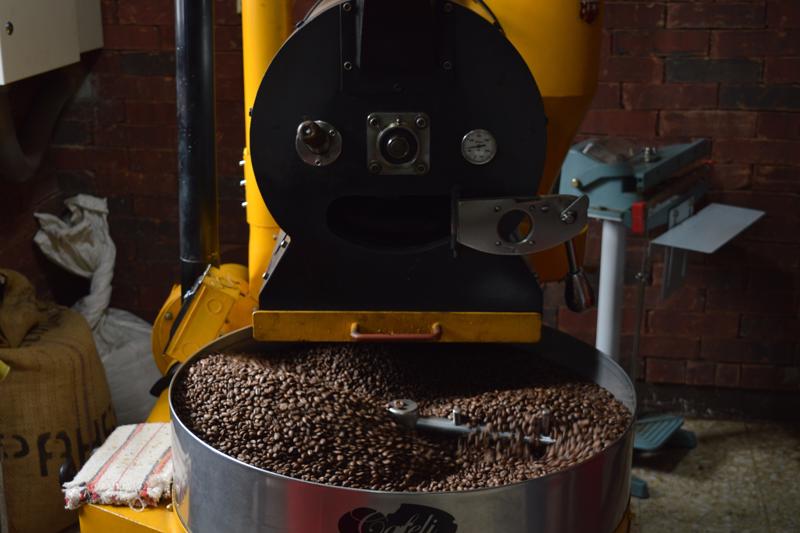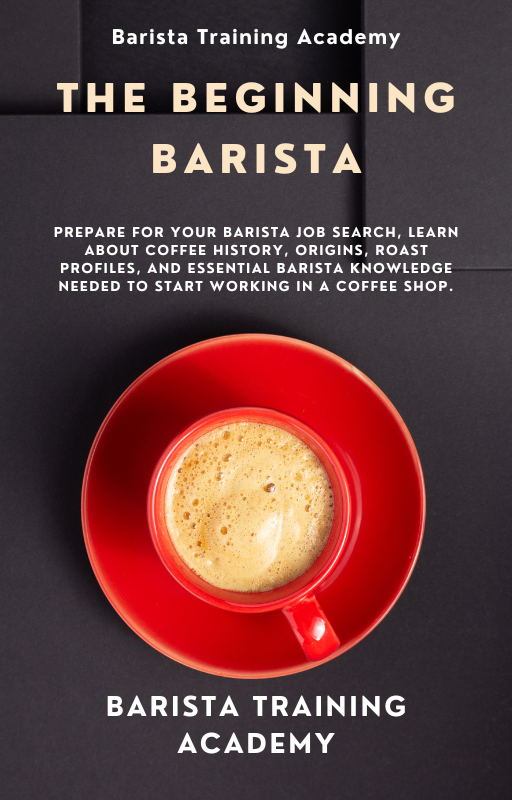Headline Barista Skills:
Learn About Various Coffee Roast Profiles
To answer the question “How to be a barista?” you need to examine your willingness to learn basic barista skills. The world of coffee is amazing: it’s full of passion, science, discovery, and innovation.
It means you will never stop learning. And as many experienced baristas say, the more you know, the more you know you don’t know. So if you want to become a barista with no experience, you can start by reading about coffee and getting some fundamental knowledge about coffee.

Coffee Roasting Fundamentals
Roasting is when green coffee beans are exposed to high temperatures and turn to brown beans ready for grinding and brewing.
Before roasting, coffee traveled along the whole coffee production chain and stored as green. This is the only way to preserve the quality and taste locked in a coffee bean. Green coffee bean doesn’t have the aroma and flavor we know – it only gains it after roasting.
When green beans are exposed to extreme heat, the chemical reactions inside of them start to occur. The water evaporates, the oils start to concentrate, and the beans lose weight as they become darker.
Experienced roasters and baristas know that every second matters when you roast coffee. It will determine the roast profile and the taste qualities of the coffee you serve.
When the coffee is roasted, the beans are quickly cooled down and should be delivered and served as soon as possible. Otherwise, they’ll start losing their taste qualities. The fresher the coffee, the better the espresso shot you can pull.
Reading the beans
Depending on the temperature and how long the beans are exposed to heat, they turn different colors – from light brown to dark chestnut color. As a good barista, you need to know how the beans were roasted to consult your customers.
Any barista training course includes coffee profiles, and you can learn about it right now without paying any money!
You have to know that different coffee profiles have different taste qualities. For example, lighter roasts have more caffeine than darker roasts. Lighter roasts are often characterized as having more acidity, while darker roasts have more bitterness. Again a lighter roasted coffee is lighter in body and has a more fruity and flowery smell, while darker roasts have a heavier body and reveal more nutty and chocolate notes.
This online barista training article will teach you the roasting fundamentals and more elaborate coffee vocabulary!
If you continue to read further, you will find out the most general categories of coffee roasting profiles. Even if you have no barista experience, this knowledge will help you during your first barista job interview and at the very beginning of your barista career.
Light roasts
You can achieve a light roast at a temperature of 385-401 F. At around 401F, the “first crack” occurs when the beans pop up almost like popcorn. So most of the roasts within this category are taken out of the roaster just before or right at the time of the first crack.
It will be light brown in color with no oil on the surface because it wasn’t roasted long enough for the oils to come out to the bean's surface. In these roasts, the coffee origin is the most distinct. Some coffee connoisseurs can say where the coffee came from just by looking at the lightly roasted coffee. The main light roasts names are:
- Light City
- Half City
- Cinnamon
Medium roasts
The medium roasts are heated up to 410-426F between the end of the first crack and just before the second crack.
This type of roast is medium brown in color and a non-oily surface. This is the roast that’s most preferred in the United States. These roasts are also considered to be the most balanced. The most common names are:
- City
- American
- Breakfast
Medium-dark roasts
You can get the medium roast in the temperature range of 437-446 F, almost in the middle of the second crack. They are rich, dark with some oil on the surface of the bean and a bittersweet aftertaste. You won’t taste any acidity here. The most common names of this roast are:
- Full City
- After Dinner
Dark roasts
The dark roasts are achieved at 464-482 F (about the end of the second crack and sometimes after it). You will see shiny black beans with an oily surface and a pronounced bitterness or even smoky and ashy taste and aroma.
They also contain considerably less acidity and caffeine. Dark roasts are often used for espresso blends. Dark roasts can be called differently. Here are just some of the most common names:
- High
- Continental
- New Orleans
- European
- Espresso
- Viennese
- Italian
- French
Roasting yourself
To launch your barista job successfully, you might want to experiment with the roasts at home. Get some green beans and develop your barista skills by roasting them in the oven or on a frying pan. See what happens! Boost your barista skills and employment chances!
If you have any comments or suggestions, please, feel free to share your experience in the comments.

Brought to you by Barista Training Academy, “The Beginning Barista,” Your Ultimate Prep Guide to Getting Your First Job as a Barista” is an ultimate resource that is available online. It is affordable for anybody who is looking to start a career in the coffee industry. For more information, visit our blog.
